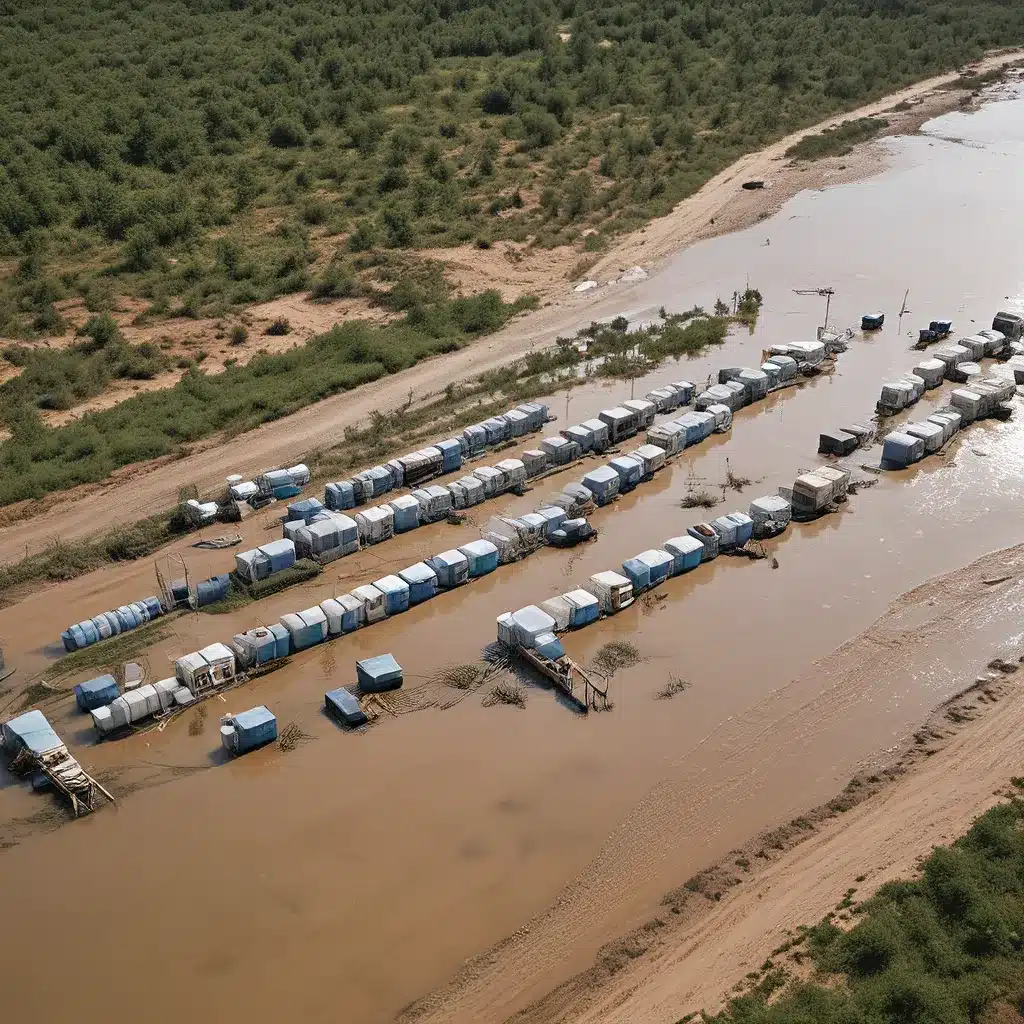
As a seasoned water treatment professional, I’ve seen my fair share of environmental crises. From crippling droughts to devastating floods, the ability to anticipate and respond to these challenges has become increasingly critical. In this in-depth article, I’ll guide you through the intricacies of preparing for emergency water needs during environmental emergencies, drawing insights from the latest research and my own experiences on the frontlines.
Understanding the Landscape of Environmental Crises
The global landscape is shifting, and the frequency and intensity of environmental crises are on the rise. According to a report from the Office of the Director of National Intelligence, the world is facing a future marked by “increased frequency and severity of natural disasters” due to factors like climate change, population growth, and urbanization.1 This sobering reality means that water treatment and environmental services providers must be proactive in their planning and response strategies.
One of the most pressing issues is the potential for water scarcity during these crises. The European Parliamentary Research Service predicts that by 2040, water stress will affect over 5 billion people globally, with some regions experiencing severe shortages. This could lead to widespread disruptions in water supply, sanitation, and critical infrastructure.
Anticipating Emergency Water Needs
So, how can we anticipate and prepare for these water-related emergencies? It all starts with understanding the unique challenges and potential scenarios that may arise.
Mapping Vulnerabilities and Risks
One of the first steps is to conduct a thorough risk assessment of your local area or region. This involves identifying the key vulnerabilities, such as aging water infrastructure, dependence on a single water source, or susceptibility to natural disasters. By mapping these risks, you can develop targeted strategies to mitigate potential disruptions.
For example, a coastal community prone to hurricanes may need to invest in hardening its water treatment facilities and distribution networks to withstand high winds and flooding. Alternatively, a desert region facing chronic water scarcity may need to explore alternative water sources, such as groundwater or desalination, to ensure a reliable supply during droughts.
Scenario Planning and Contingency Strategies
In addition to understanding the risks, it’s crucial to engage in scenario planning. This involves imagining a range of potential crisis situations and developing corresponding contingency plans. What would happen if a major water treatment plant was knocked offline for an extended period? How would you maintain water service to critical facilities like hospitals and emergency shelters?
By walking through these hypothetical scenarios, you can identify resource gaps, logistical challenges, and communication breakdowns before they occur. This allows you to put in place the necessary backup systems, emergency response protocols, and coordination strategies to ensure a more effective and resilient response.
Leveraging Cutting-Edge Technology
Advancements in technology are playing a crucial role in enhancing our ability to anticipate and respond to water-related emergencies. For instance, a recent study published in the Journal of Geophysical Research: Water explored the use of real-time satellite data to monitor and predict drought conditions. By integrating this information with local water supply and demand data, water managers can make more informed decisions and allocate resources more effectively.
Similarly, the rise of internet-connected sensors and smart water networks can provide early warning signals, enable rapid leak detection, and optimize the distribution of water during emergencies. As these technologies continue to evolve, their integration into water treatment and environmental services will be crucial for enhancing preparedness and resilience.
Fostering Collaboration and Community Engagement
While technical preparedness is essential, the human element of emergency response cannot be overlooked. Effective crisis management requires a collaborative approach that engages a diverse array of stakeholders, from local authorities and first responders to community organizations and individual citizens.
Building Partnerships and Coordination Mechanisms
Establishing strong partnerships with other water utilities, emergency management agencies, and relevant government agencies is crucial for coordinating a unified response during crises. By aligning protocols, sharing resources, and practicing joint exercises, these collaborative efforts can help ensure a more seamless and efficient emergency response.
For example, a water utility might work closely with the local fire department to ensure a reliable supply of water for firefighting operations during a drought or wildfire event. Similarly, coordination with public health agencies can help prioritize the delivery of clean water to vulnerable populations, such as the elderly or those with compromised immune systems.
Community Engagement and Public Education
Equally important is the engagement and empowerment of the local community. By educating residents on water conservation, emergency preparedness, and the role of water treatment and environmental services, you can foster a shared understanding and sense of ownership in the overall resilience efforts.
This might involve hosting public workshops, distributing informational materials, or partnering with community organizations to disseminate critical information. When community members understand the importance of their actions and the challenges faced by water and environmental service providers, they are more likely to be active participants in emergency response and recovery efforts.
Conclusion: Embracing a Culture of Preparedness
As we navigate an increasingly complex and unpredictable environmental landscape, the ability to anticipate and respond to water-related emergencies has never been more crucial. By leveraging the latest research, technology, and collaborative partnerships, water treatment and environmental services providers can build a culture of preparedness that ensures the reliable delivery of this most precious resource, even in the face of crisis.
Remember, Inland Waters is here to support you in this journey. Our team of experienced professionals is dedicated to helping you navigate the challenges of environmental crises and safeguard the water supply for your community. Together, we can harness our fluid foresight to meet the emergency water needs of today and tomorrow.


